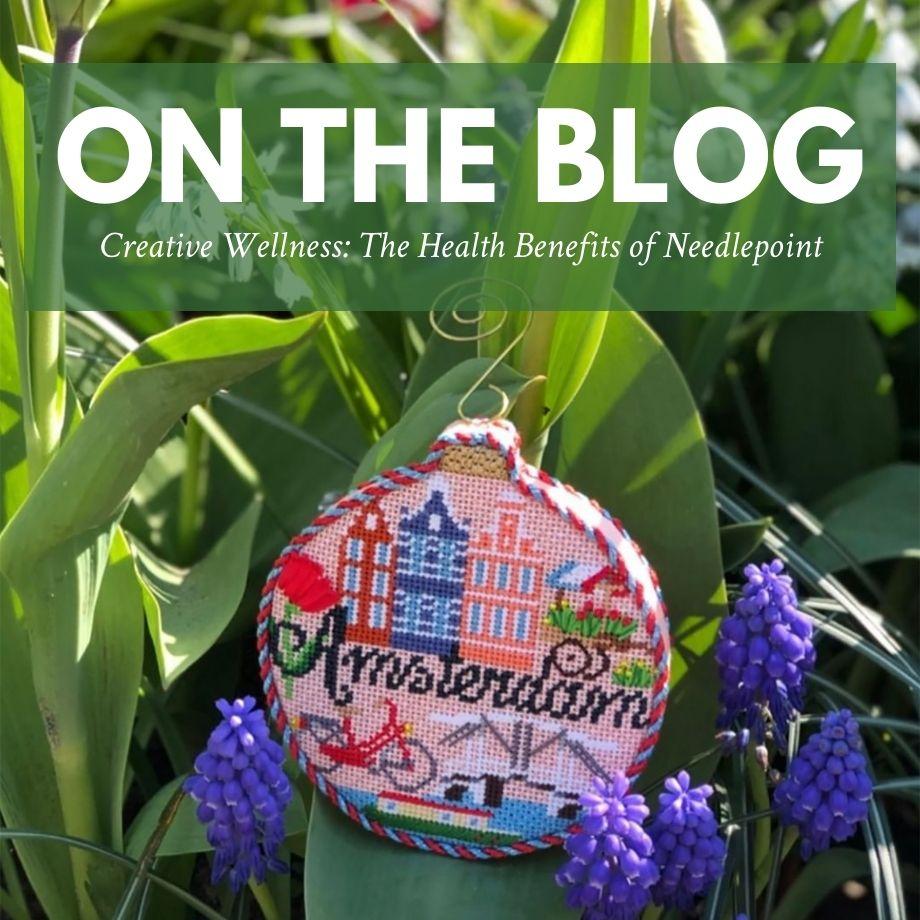When you incorporate decorative stitches into your project, there will almost always be a spot where you cannot complete the entire stitch. When this happens, you will need to compensate, or adjust, the stitch to make it fit. We have a few tips and tricks to help you with compensating on your next project!
First, if you’re able, start a row of decorative stitches in a large, open area on the canvas. This will allow the stitch pattern to develop and take shape without compensation. It is always easier to compensate after the stitch pattern is in place because you can fill in above and below your initial line of stitches.
Tip: Use stretcher bars to maintain tension and keep all of your stitches smooth and even so compensation stitches will fit with ease.
When you get to an area that requires compensation, grab a post-it note and a diagram of your stitch. Place the post-it over the diagram to mimic the area you’re trying to fill on your canvas. This will make your compensation clearly visible. The stitches will be shorter, but you should follow the same angle to preserve the appearance of the original stitch.
If you don’t have a diagram of your stitch handy, you may also lay your thread on top of the canvas from the correct starting point to the correct ending point, as if you would be able to complete the full stitch. The thread will pass over the area where the compensation stitch needs to end and you will see where the needle should go down creating the shortened stitch and retaining the original angle.
Tip: It’s okay to use Tent Stitch in lieu of compensation. Sometimes compensation is awkward and can take away from an element on the canvas, particularly around lettering.
You can also try a technique called “ghost stitching.”
Ghost stitches use a single ply of floss to baste decorative stitches over areas that require compensation. You can see ghost stitches in the photo below below the girl’s skirt and around one of her feet. Ghost stitches allow you to continue the stitch pattern across the canvas without any guess work or counting. Afterward, go back with the proper thread, stitch the clearly defined partial stitch and cut away the ghost stitches. Where the ghost stitches cover an adjacent painted area, you can either remove the stitches or stitch directly over them with the appropriate thread as long as it provides good coverage.
Tip: Stitch the background pattern first so you don’t have to fit compensation stitches around other delicate areas. In the photo above, you can see how the background is compensated around the girl’s scalloped skirt. It would be more difficult to compensate if the scallops were already stitched in.
Ghost stitches can also be used to mark the start of a decorative stitch when the stitch pattern is interrupted across large areas of the canvas. For example, if you’re working a vertical stitch across a canvas, you want to be consistent with the placement as your eye travels down the canvas. Simply baste a single ply of a different color thread from the end of your completed stitch pattern over the canvas and come up in the intersection where the stitch should be picked back up. Once you begin the decorative stitch in the new area, cut away the single ply thread.
Be aware, certain stitches cannot be compensated, such as knots and looped stitches. For these areas, you will need to select a different stitch or create a smaller version with less thread.
There are many ways to conquer compensation stitches while enhancing a canvas with decorative stitches. Now that you know how, check out our wide selection of kits with stitch guides to get started today. Happy stitching!


















